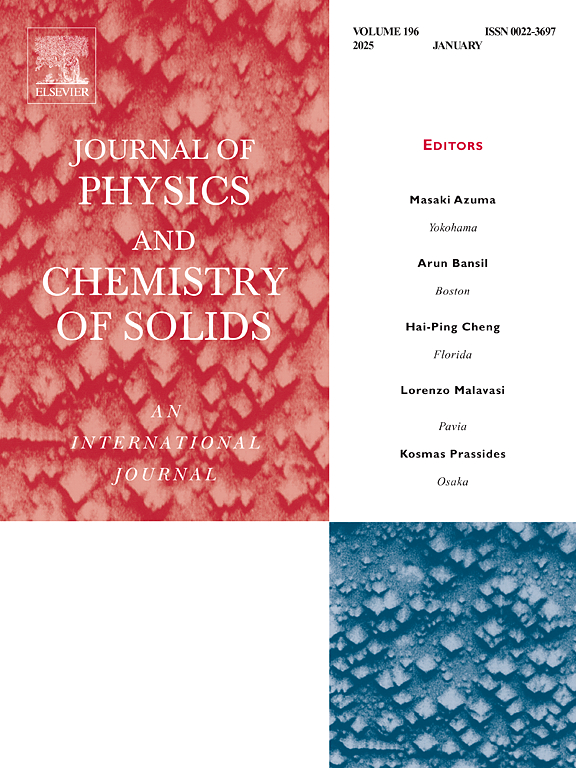Dielectric and dynamical properties of ABO3 (A = Li, Na; BV, Nb): A comparative first-principles study
IF 4.3
3区 材料科学
Q2 CHEMISTRY, MULTIDISCIPLINARY
引用次数: 0
Abstract
To enhance the understanding of the characteristics and underlying microscopic physics of ferroelectric and hyperferroelectric instabilities in the trigonal structure of LiNbO3-type oxides, we performed a comparative study of the lattice dynamical properties of LiNbO3, LiVO3, and NaVO3 using first-principles computations. The behavior of both instabilities under increasing hydrostatic pressure is also investigated. The calculated dielectric constants (ε∞) are 6.81 for LiNbO3, 16.00 for LiVO3, and 14.60 for NaVO3, highlighting the significant impact of B-site cation substitution on the dielectric response of these compounds. The calculated phonon dispersion curves reveal the dependence of ferroelectric instabilities on A and B cation substitutions. Under hydrostatic pressure, ferroelectricity is consistently enhanced, unlike perovskites such as BaTiO3. Via the analysis of the real-space interatomic force constants, we show that the difference in the phonon dispersion arises from the change in the A on-site IFC and the cation-oxygen IFCs, which further drives the change of the dynamics under pressure. This study offers insights into the tunability of hyperferroelectricity in LiNbO3-type materials.
求助全文
约1分钟内获得全文
求助全文
来源期刊
CiteScore
7.80
自引率
2.50%
发文量
605
审稿时长
40 days
期刊介绍:
The Journal of Physics and Chemistry of Solids is a well-established international medium for publication of archival research in condensed matter and materials sciences. Areas of interest broadly include experimental and theoretical research on electronic, magnetic, spectroscopic and structural properties as well as the statistical mechanics and thermodynamics of materials. The focus is on gaining physical and chemical insight into the properties and potential applications of condensed matter systems.
Within the broad scope of the journal, beyond regular contributions, the editors have identified submissions in the following areas of physics and chemistry of solids to be of special current interest to the journal:
Low-dimensional systems
Exotic states of quantum electron matter including topological phases
Energy conversion and storage
Interfaces, nanoparticles and catalysts.

 求助内容:
求助内容: 应助结果提醒方式:
应助结果提醒方式:


